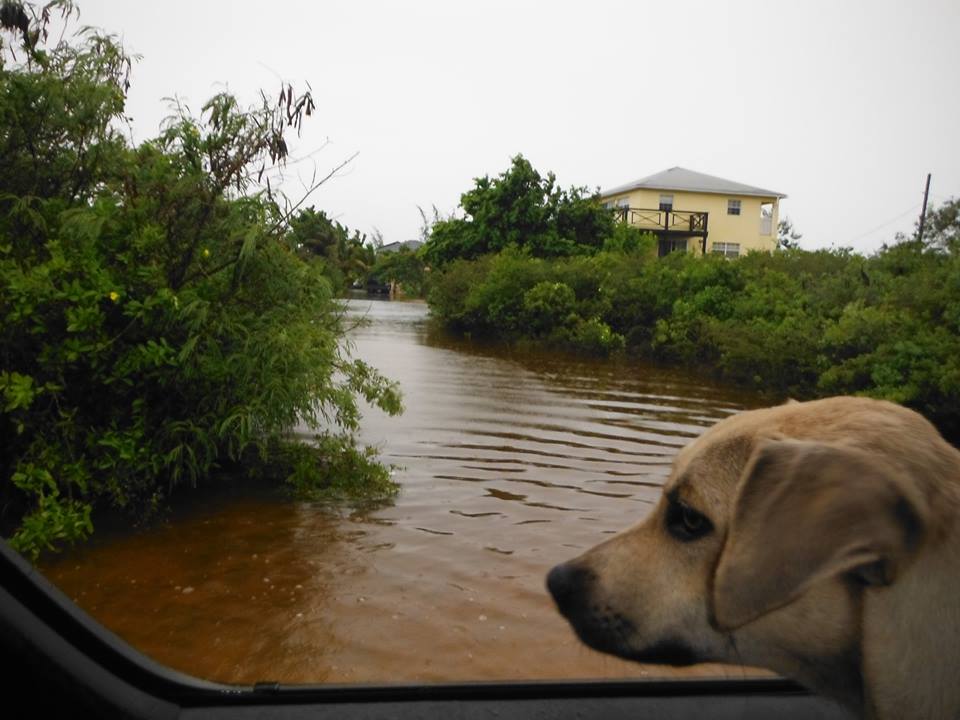
Most people understand the paradise dream: living in a hammock under the palm trees. But it's a crazy dream, as many learn, because paradise isn't always paradise. And nothing says "not paradise" faster than a good tropical storm or hurricane.
All of us who crave the dream need to understand that. If you build or buy a house in any storm-alley location (including the U.S. East Coast!), expect a storm sometime.
Tom and I did our best to minimize the disaster when we began our venture on North Caicos Island. We visited in every season before making a commitment, so that we understood the island's version of the seasons: wind, dry, rain, mosquito. We observed how each storm changed the beach. We listened when the locals talked about weather.
And so we bought property a bit inland from the sea and hired a local builder who knew what he was up against. When, in the early 90s, we heard about a spectacular drenching rain that required people to use boats to reach Kew, we decided to elevate our house on pillars.
There have, of course, been tropical storms and hurricanes since Aloe House was built. We've had to repair the roof a couple of times, replace the garage door, toss a couple of pieces of rain-damaged furniture. And now, because of Cristobal gathering himself over the Turks and Caicos to become a hurricane, we have the same sort of flooding we heard about years ago.
Photos of the flooding show Aloe House in the distance, past impassable waters. (Thank you, LynnRae, for taking the shot.) We don't know yet what damage anyone will find when they get closer.
I do know this, though: no complaints. In Weather v. Humans, Weather always wins. Even when damage costs a lot, I firmly believe that anyone who builds in a known hurricane path, floodplain, tornado alley or mudslide path should be prepared to just suck it up when disaster happens, because it's never "if" and always "when."
As the animated Super Chicken said to his sidekick, "You knew the job was dangerous when you took it, Fred!"
All of us who crave the dream need to understand that. If you build or buy a house in any storm-alley location (including the U.S. East Coast!), expect a storm sometime.
Tom and I did our best to minimize the disaster when we began our venture on North Caicos Island. We visited in every season before making a commitment, so that we understood the island's version of the seasons: wind, dry, rain, mosquito. We observed how each storm changed the beach. We listened when the locals talked about weather.
And so we bought property a bit inland from the sea and hired a local builder who knew what he was up against. When, in the early 90s, we heard about a spectacular drenching rain that required people to use boats to reach Kew, we decided to elevate our house on pillars.
There have, of course, been tropical storms and hurricanes since Aloe House was built. We've had to repair the roof a couple of times, replace the garage door, toss a couple of pieces of rain-damaged furniture. And now, because of Cristobal gathering himself over the Turks and Caicos to become a hurricane, we have the same sort of flooding we heard about years ago.
Photos of the flooding show Aloe House in the distance, past impassable waters. (Thank you, LynnRae, for taking the shot.) We don't know yet what damage anyone will find when they get closer.
I do know this, though: no complaints. In Weather v. Humans, Weather always wins. Even when damage costs a lot, I firmly believe that anyone who builds in a known hurricane path, floodplain, tornado alley or mudslide path should be prepared to just suck it up when disaster happens, because it's never "if" and always "when."
As the animated Super Chicken said to his sidekick, "You knew the job was dangerous when you took it, Fred!"
 RSS Feed
RSS Feed